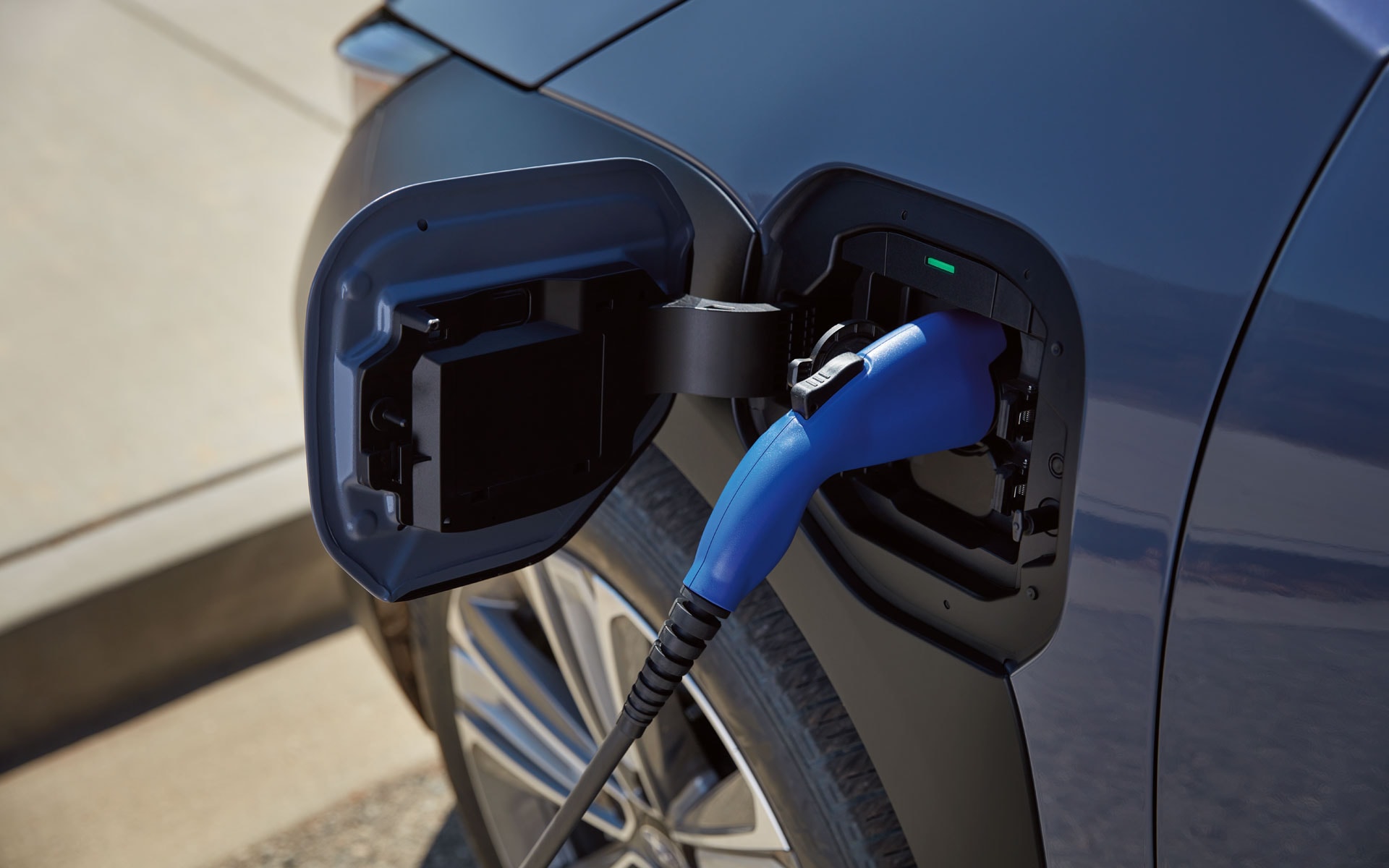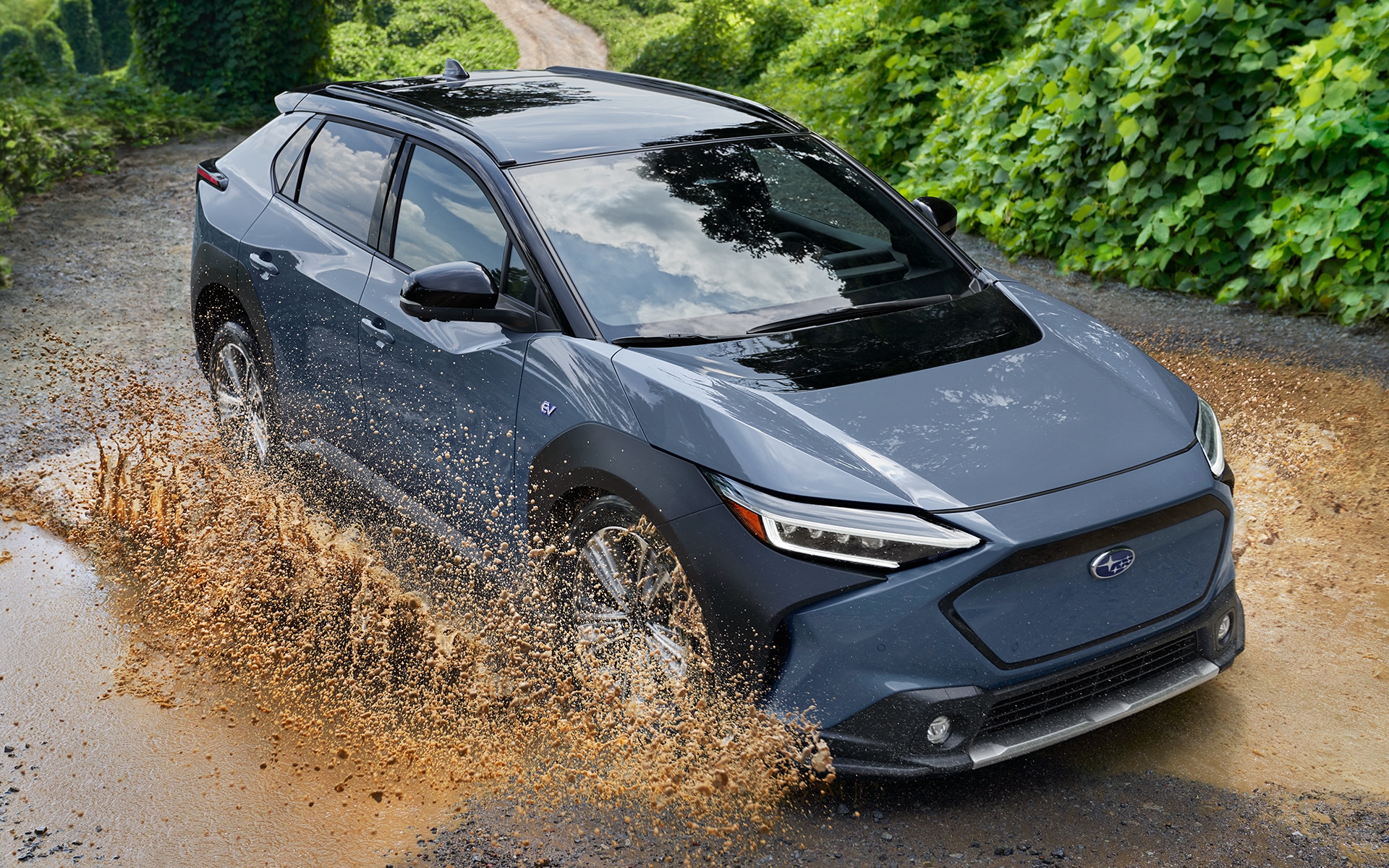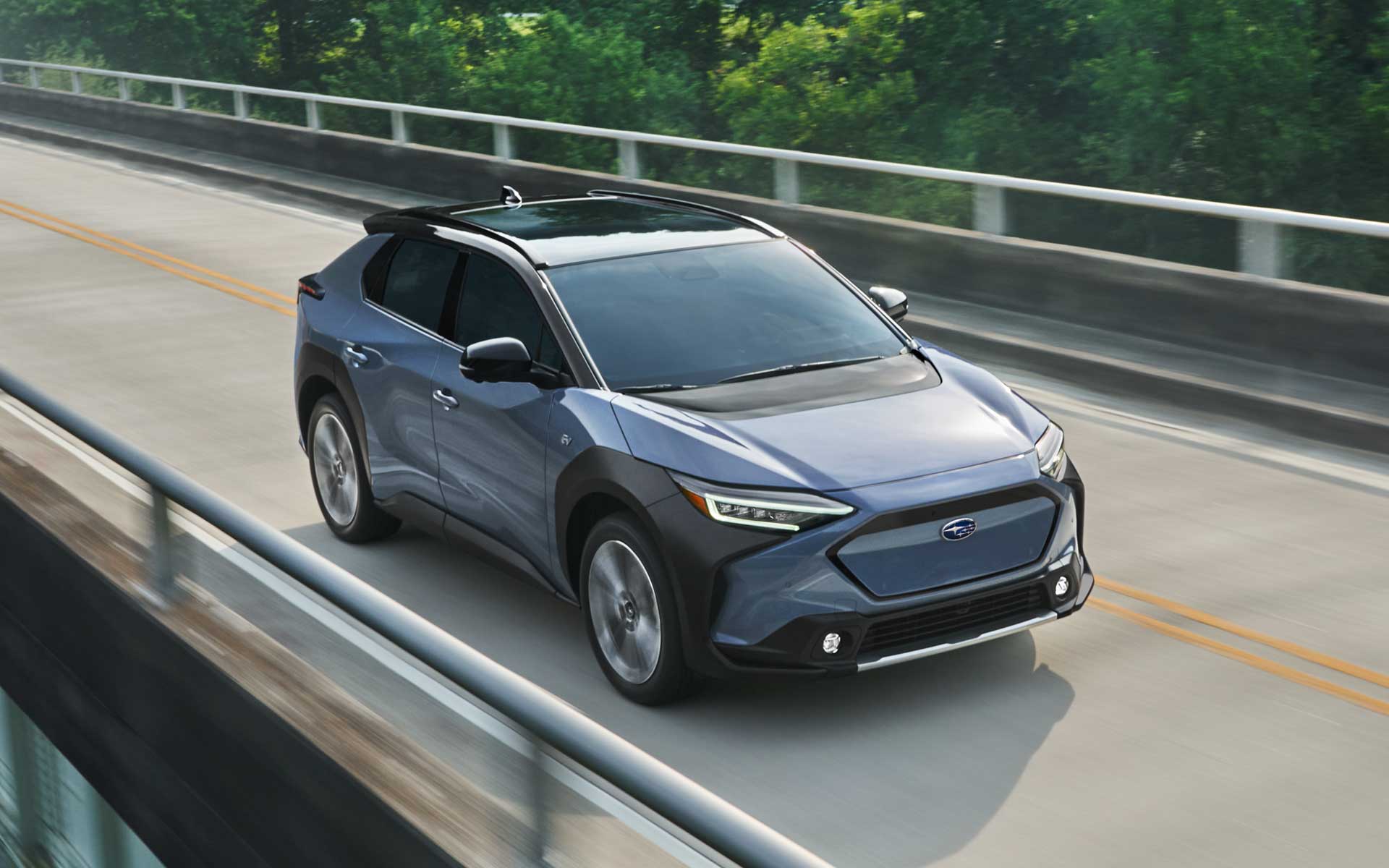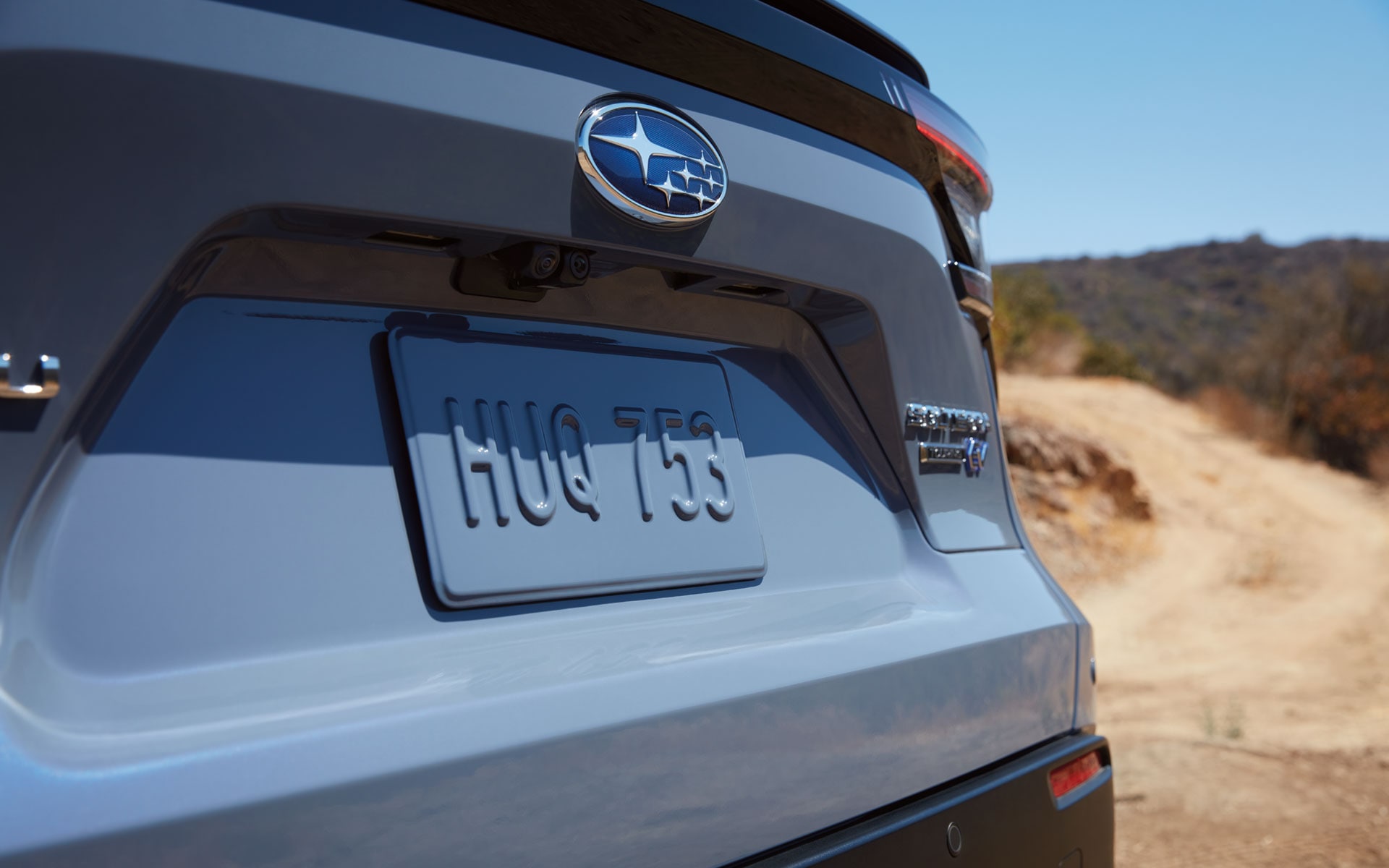A Subaru Guide to Electric Vehicles
The next evolution of Subaru power is here. The Subaru all-electric vehicle lineup starts with the Subaru Solterra EV SUV, but there is much more to come. A Subaru EV takes all of the Symmetrical All-Wheel Drive capability, advanced active safety technology, and trusted longevity and reliability that Subaru vehicles are known for and combines them with the next-generation e-Subaru Global Platform, a new all-electric vehicle architecture.
We've made it easy to understand and access the conveniences an EV gives you, like charging at home or through our trusted networks, leaving you more freedom to explore.
Charging an Electric Vehicle
Charging an Electric Vehicle
EV Charging Flexibility at Home or On the Go
With a Subaru EV, you can leave home each morning with a full charge so you're always ready to go anywhere. Just like your smartphone, you can simply plug in to a standard wall outlet when you get home with the included Level 1 120V charger. You can get an even faster charge with a Level 2 240V charger utilizing an outlet like the kind used for an electric clothes dryer. Other Level 2 chargers are available for public or customer use at retail stores, hotels, and parking lots1.
DC fast-charging stations with the most powerful charging technology are available at dedicated locations across the nation.


Benefits of Electric Vehicles
Benefits of Electric Vehicles
Maintenance Savings
A Subaru EV is not only more fuel efficient than a traditional internal combustion engine vehicle; it's also simpler to maintain. You'll even spend less time waiting at the mechanic for regular maintenance like oil changes compared to a gas-powered vehicle.
Benefits of Electric Vehicles
Solterra Is a Zero-Emissions Vehicle
With no tailpipe emissions and no need for gasoline or oil changes, owning an efficient, capable Subaru EV is the easiest way to enjoy everything the natural world has to offer while protecting it at the same time.
Benefits of Electric Vehicles
Fuel and Time Savings
No internal combustion engine means no need for fuel, and if you charge at home, you can expect to only pay approximately $9-$10 for a full charge2, which is a huge savings compared to even the most efficient internal-combustion vehicles. Plus you save on time, since there's no need to stop for gas on the way, making it one less thing you - and your wallet - need to worry about on your commute.

Benefits of Electric Vehicles
HOV Lane Access for a Better Commute
Certain states allow electric vehicles to access high-occupancy vehicle lanes and carpool lanes. It's just one more way owning a Subaru EV can make everyday driving easier and more enjoyable.


2025 Solterra Touring Onyx Edition
Includes these key features:
- 20-inch black-finish alloy wheels
- Black StarTex® upholstery
- Two-tone paint with Galactic Black a-pillars, roof, and roof spoiler
- Black-finish exterior badging and accent trim
- Panoramic fixed glass roof with power sunshade
- Digital rearview mirror
FAQ
Electric vehicles (EVs) rely on a battery and electric motors instead of the tank and internal combustion engine of gas-powered vehicles. Hybrid electric vehicles are another common type of EV and more recent models can usually operate in electric-only mode for a limited number of miles on a full charge before switching to the internal combustion engine. Some hybrids are plug-in hybrid electric vehicles (PHEVs), which can be charged from an external source, while others can only charge their batteries through the gas-powered engine. Fuel cell electric vehicles (FCEVs) are less common in the United States and use hydrogen gas fuel in combination with oxygen to create electricity.
Fuel is not required in EVs, so you can feel good about owning an environmentally friendly vehicle without the pollutants that gasoline-powered cars emit. Plus, with no need for fuel, you can save on the cost of gas and no longer worry about filling up at the gas station. Electric vehicles cost less to maintain because their drivetrains have far fewer moving parts and don't require oil changes and spark plug replacements. EVs that feature a powerful electric motor, like the Subaru Solterra, offer instant torque for better performance and have a quieter ride as there are no engine vibrations.
Since your Solterra can go over an estimated 227 miles on an overnight Level 2 full charge, the need to charge while running errands should not be a common occurrence. Should you need to charge while on the go, you have access to over 46,000 public Level 2 or Direct Current Fast Charging (DCFC) stations across the U.S. If you do need a charge away from home, your best bet is a DCFC station with a CCS plug. The super-fast DC charger can charge your battery from 10% to 80% in about 35 minutes3.
If you’re still driving a gas-powered car, you're probably familiar with conventional internal combustion engine car batteries, but there are big differences in the technology. As opposed to a single lead-acid battery, EVs use lithium-ion battery packs that are similar to the ones powering your smartphone and offer much greater capacity, efficiency, and longevity. Lithium-ion battery lifespans are variable due to different climate temperatures and charging habits, but every EV sold in the U.S. comes with a government-mandated battery warranty of eight years or 100,000 miles. You can extend your EV battery's life by following the manufacturer's charging best practices, and when they do lose their capacity, the battery pack can usually be repaired or replaced
The length of time it takes to charge an EV depends on many factors. Full-size EVs can obviously fit a larger battery pack than a compact EV, which in turn will affect the charge time. In general, the most important factor — beyond the amount of charge remaining — is the type of charger you are using. Level 1 chargers use the common 120V AC outlets you have in your home or garage and could take up to 50 hours if you are charging a completely empty battery. Level 2 chargers in residential settings use a 240V outlet just like an electric clothes dryer and that extra voltage can top up an empty battery in just five to six hours. Direct Current Fast Charging (DCFC) technology is typically only found in public charging stations and plugging into a DCFC will bring you from 10% to 80% of your battery capacity in about 35 minutes3.
While electricity costs vary by location, charging an electric vehicle should give you significant savings over buying gas for a traditional car over the same period of time. Some public charging networks even offer free charging. If you decide you want to install a Level 2 charger in your home, you need to factor in the cost of buying that charging equipment and paying an electrician for the installation. But many people find that their commuting and driving habits can be satisfied by plugging into a Level 1 charger that only needs a regular 120V outlet and letting their vehicle charge overnight.
With no tailpipe emissions, electric cars generate much less of an impact on the environment compared to internal combustion engine vehicles. Studies looking at the entire lifetime of an EV have shown this environmentally friendly advantage persists even when accounting for the emissions generated by manufacturing and electricity generation. As more sources of renewable electricity production like wind and solar come online, this advantage could even grow larger.
-Delaware: https://dnrec.alpha.delaware.gov/climate-coastal-energy/clean-transportation/vehicle-rebates/
-Pennsylvania: https://www.dep.pa.gov/Citizens/GrantsLoansRebates/Alternative-Fuels-Incentive-Grant/Pages/Alternative-Fuel-Vehicles.aspx
-Delmarva Power: https://www.delmarva.com/SmartEnergy/InnovationTechnology/Pages/ElectricVehicles/DE/ElectricVehicleProgram.aspx
-Atlantic City Electric: https://www.atlanticcityelectric.com/SmartEnergy/InnovationAndTechnology/Pages/EV-Savings-Benefits.aspx






